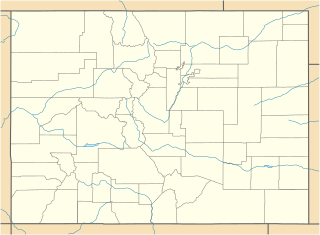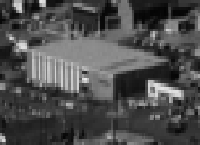This page is based on this
Wikipedia article Text is available under the
CC BY-SA 4.0 license; additional terms may apply.
Images, videos and audio are available under their respective licenses.
Old Post Office, or Former Post Office, may refer to:

Richardsonian Romanesque is a style of Romanesque Revival architecture named after architect Henry Hobson Richardson (1838–1886), whose masterpiece is Trinity Church, Boston (1872–1877), designated a National Historic Landmark. Richardson first used elements of the style in his Buffalo State Asylum for the Insane in Buffalo, New York, designed in 1870.

The United States Military Entrance Processing Command (USMEPCOM) is a Major Command of the U.S. Department of Defense, which screens and processes applicants into the United States Armed Forces. USMEPCOM is headquartered in North Chicago, Illinois and operates 65 Military Entrance Processing Stations (MEPS) located throughout the United States. The command's motto is Freedom's Front Door, signifying that a service member's career starts when they walk through the doors of the MEPS.

Alfred Bult Mullett was a British-American architect who served from 1866 to 1874 as Supervising Architect, head of the agency of the United States Treasury Department that designed federal government buildings. His work followed trends in Victorian style, evolving from the Greek Revival to Second Empire to Richardsonian Romanesque.
America's Most Endangered Places or America's Most Endangered Historic Places is a list of places in the United States that the National Trust for Historic Preservation considers the most endangered. It aims to inspire Americans to preserve examples of architectural and cultural heritage that could be "relegated to the dustbins of history" without intervention.

Ammi Burnham Young was a 19th-century American architect whose commissions transitioned from the Greek Revival to the Neo-Renaissance styles. His design of the second Vermont State House brought him fame and success, which eventually led him to become the first Supervising Architect of the U.S. Treasury Department. As federal architect, he was responsible for creating across the United States numerous custom houses, post offices, courthouses and hospitals, many of which are today on the National Register. His traditional architectural forms lent a sense of grandeur and permanence to the new country's institutions and communities. Young pioneered the use of iron in construction.
William Martin Aiken was an American architect who served as Supervising Architect of the United States Treasury and oversaw and participated in the design and construction of numerous federal buildings during his appointment that now reside on the National Register of Historic Places.

The U.S. Post Office and Courthouse, built in 1933, is an historic United States Post Office and federal courthouse building located at 120 12th Street in Columbus, Georgia. It was designed by Atlanta-based architect William Augustus Edwards who designed nine South Carolina courthouses as well as academic buildings at 12 institutions in Florida, Georgia and South Carolina. On September 29, 1980, it was added to the National Register of Historic Places.
U.S. Post Office and Courthouse, or variations such as Federal Courthouse and Post Office or prefixed by Old, may refer to:
Masonic Temple Building may refer to:
Federal Building and Post Office, and variations such as prefixed by Old, may refer to:

Mifflin Emlen Bell, often known as M.E. Bell, was an American architect who served from 1883 to 1886 as Supervising Architect of the US Treasury Department. Bell delegated design responsibilities to staff members, which resulted in a large variety of building styles, including Second Empire, Châteauesque, Queen Anne and Richardsonian Romanesque.

The Old Greenville City Hall, is a former building in Greenville, South Carolina. It was originally built as the U.S. Courthouse and Post Office in 1889 on the corner of Main and Broad Streets. After 1938, it was transferred to the City of Greenville and used as its city hall. It was named to the National Register of Historic Places on August 19, 1971. After its demolition in 1972 or 1973, it was removed from the National Register in 1973.

US Post Office and Federal Courthouse-Colorado Springs Main, also known as the Colorado Springs Post Office and Federal Courthouse, is a historic federal building that serves as a post office and courthouse. It is located at 210 East Pikes Peak Avenue in Colorado Springs, Colorado. The Renaissance Revival - Beaux-Arts style building is a National Register of Historic Places listing and is on the Colorado State Register of Historic Properties.










